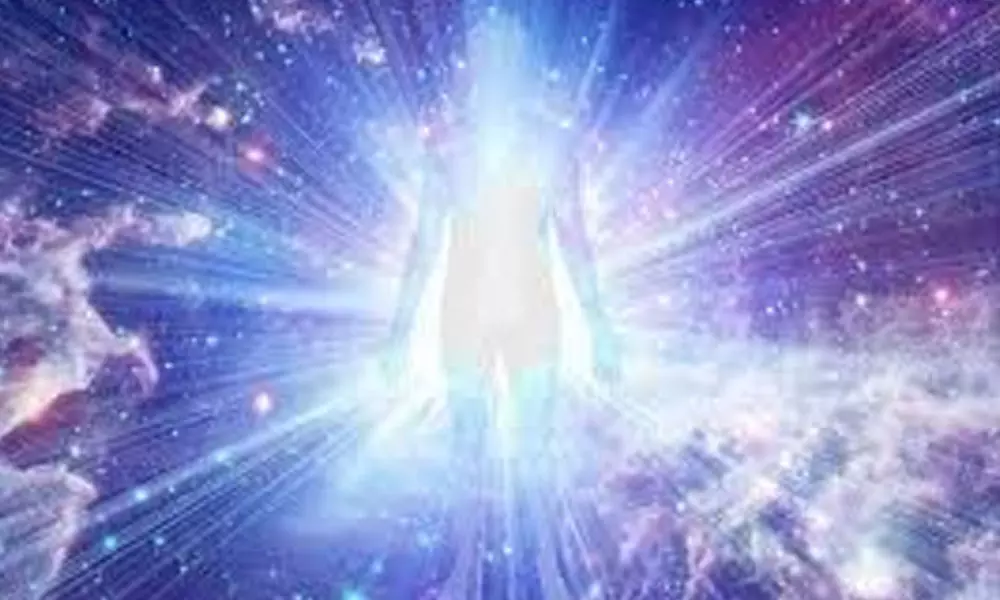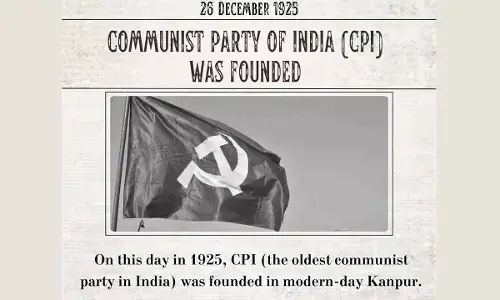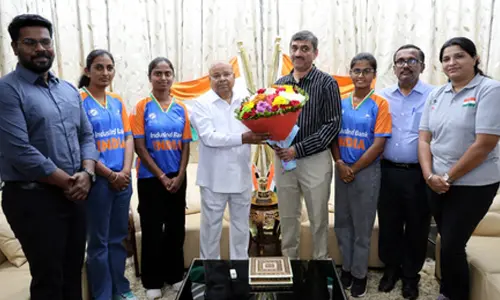Find light within for you – and for others

Find light within for you – and for others
Light has always meant different things to different people
Light has always meant different things to different people. Common to all, however, has been the recognition that it sustains all life. Its significance has also been referred to in the Holy Scriptures of religions with the largest following in the world.
God said, "let there be light, and there was light" goes the 3rd verse of the Old Testament of Christianity. The verse goes on to add that, then, light was divided from darkness. The 'Maha Bhagavatham,' one of the Vedic Epics of Hindu religion, was translated into Telugu by the immortal medieval poet Bammera Pothana. Most Telugu people are familiar with many of its poems. Relevant to today's subject is the one which speaks about the Sun God, saying that, just as the Sun appears exclusive, to each living being separately, God, although he is but one, manifests Himself in different forms to different persons. The well-known Shloka from an important Upanishad (Vedic text of Hindu Philosophy), goes "Asathoma Sadgamaya, Thamasoma Jyothirgamaya, Mrithyoma Amrithamgamaya," or "lead me from ignorance, to truth from darkness to light, from death to immortality." Islam preaches that "God is the light of the heavens and the earth."
Scientists see light as a medium of energy and information, making life possible, and revealing the external world to living beings through the sense of sight.
The Theory of Special Relativity of Einstein postulates that nothing can move faster than light. If something were to exceed that limit, it would move backwards in time. Many books have been written, and movies made, fantasising about travelling back in time, believing that all that one needs to do is to travel faster than light! But, the Theory of General Relativity, also put forth by Einstein, lays down that objects approaching the speed of light acquire infinite mass and, consequently, need infinite energy to be moved. Thus, it is impossible for matter to travel faster than light. Astronomical distances are calculated in 'light years,' or the distance travelled by light in the period of one year. Scientists Michelson in 1887 and Morley calculated the value of the velocity of light by conducting an ingenious experiment. Vedic scholars, however, claim that Sayana, the ancient Sanskrit scholar, had, in a verse of a Vedic hymn, arrived at almost that very number, as early as the 13th Century CE!
Large-scale exhibitions of pyrotechnics, and buildings decorated with colourful bulbs, are very much part of celebrations on special occasions, such as Diwali and Dussehra, as well as important national days such as the Independence Day and the Republic Day and marriages.
Noteworthy among such decorations and pyrotechnics are, the lit-up Mysore Maharajas' Palace during Dussehra nights, and the Fourth July celebrations in the USA. The 'Symphony of Lights,' put up every evening in Hong Kong, is one of the most spectacular of such displays. I watched it once from the Kowloon side. Simply captivating!
Laser shows are popular, too, especially in events such as the World Cup in Cricket or the Olympic Games. The show which the Afro-Asian Games Organising Committee put up, in Hyderabad during the Afro-Asian games in 2004, when I was the Chief Secretary to the Government of Andhra Pradesh, was truly a treat for sore eyes!
The word light has also become a part of our day-to-day lexicon. For instance, a very intelligent person is said to be 'bright.' A person who is likely to do well in life is said to have 'bright' prospects and his performance, if extraordinary, described as 'dazzling.' An incriminating, or embarrassing, and unrevealed, piece of information is a 'dark' secret. A person ignorant of something is said to be in the 'dark.' Speaking 'darkly' is to convey a possibly threatening or frightening implication.
Light is vital to the technologies of many things such as smartphones, laptops and the internet, to medical instruments and light-emitting diode LED lightning. Lasers (Light amplification by stimulated energy of radiation) are components of many products we use every day. Even operations to remove cataracts in human eyes are performed using them, reducing pain and aiding quick recovery. It has been said that the 21st century will depend as much as on photonics, as the previous one did on electronics, in facing the challenges of the modern world. 'Ultraviolet' and 'infrared rays' have their special utility particularly in medicine and aiding night vision.
Light is also fuel. And food, as in the case of photosynthesis by plants. Processes that happen within human and animal bodies, the cycles of oceans, the magnetic field around the earth and the climate are also functions of light, in one way or other.
Light can also bring harm, as for instance, in the form of ultraviolet rays from outer space, from which, thankfully, the earth is shielded, by the Ozone layer.
Today is the festival of lights, Diwali. The whole country will celebrate the much-awaited event. People flying over India will see an ocean of lights, with the occasional flash of crackers or flowerpots. From Jammu and Kashmir to Kerala, and from Karnataka to Mizoram. When I was a child, Diwali was celebrated with much abandon and gaiety, especially in my maternal aunt's house. A small fortune was spent on the budget for firecrackers. On one Diwali night, I recall with horror, a creeping cracker found its way into my right thigh, through the trousers! Luckily, first-aid was administered, and no damage done. Celebration of Diwali at Ramachandrapuram, my father-in-law's place, was also quite an event. Much to my embarrassment, I was asked to wear nothing more than a mere loin cloth, barely serving the requirements of decency. I was then given a rope with a burning end, which was used to light the small wicks to set off missiles and aeroplanes soaring into the sky.
In our childhood, most of the sparklers and flowerpots were made at home, using ingredients such as black powder, potassium nitrate, sulphur, aluminium grains. Later on, we lived for a few years in a flat in an apartment house in Hyderabad. Diwali celebrations there were mostly community events, the highlight being the 10,000 'ladies' which went off for minutes on end. The evening ended with a bonfire with material from all the homes. Truly a sight worth seeing, and much looked forward to!
While in service, the customary circumspection and caution, with which one approached the question of acceptance of gifts, was relaxed benignly at Diwali time, concessions being made for harmless things such as fire-cracker hampers and sweets. And, ensuring that return gifts were invariably given, made it that much easier on the conscience!
Stay safe and healthy this Diwali. And do keep in mind this need to be kind to the environment. It has to cater to such occasions for centuries in the future. Remember, we have entered the era of "green" firecrackers.
White light, as is well known, is a mixture of many frequencies and colours such as those we find in a rainbow (VIBGYOR). And no light at all, on the other hand, is absolute darkness, as outer space is. The colours of most things we encounter, in our day-to-day lives, lie somewhere between those two extremities. White often signifies purity or goodness, and black, evil or wickedness. Those of us who wish to lead a life that is virtuous, but laced with an understanding of the practical aspects of real life, need to realise that it is the grey area, in between, that one must negotiate for finding happiness, for ourselves and for others. Ethics and morals, after all, are functions of time. An appreciation of that truth needs inform our attitudes.
(The writer is former Chief Secretary, Government of Andhra Pradesh)
(The opinions expressed in this column are that of the writer. The facts and opinions expressed here do not reflect the views of The Hans India)














